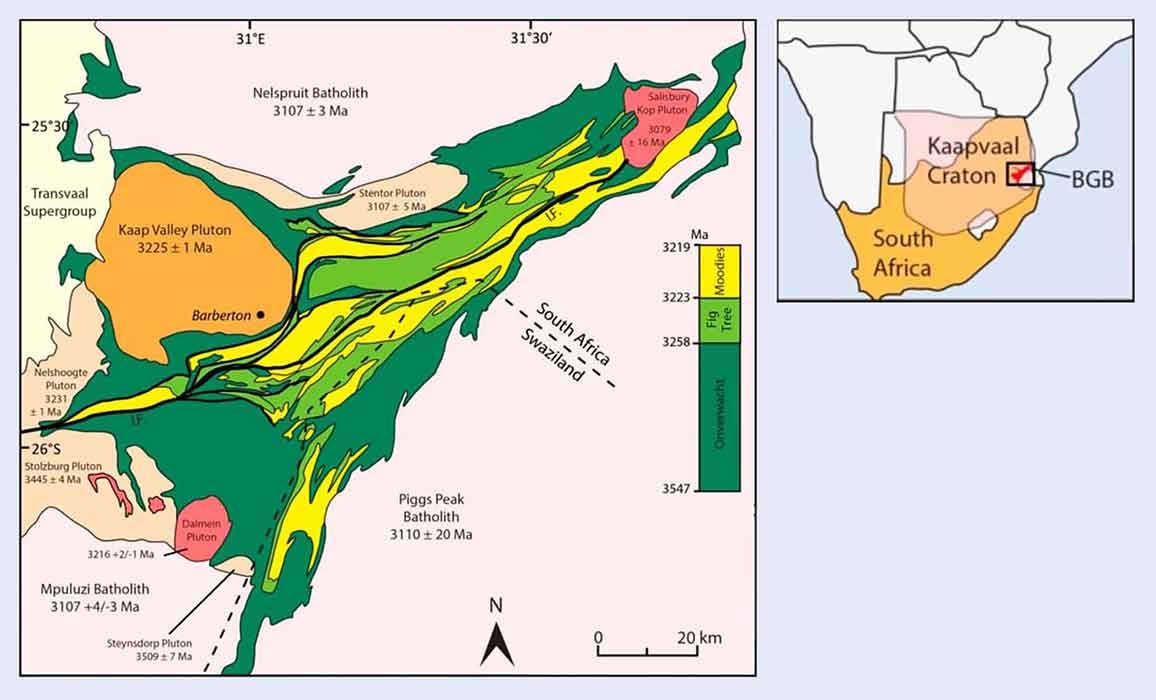Description

Disclaimer: Copyright infringement not intended.
Context
Geologists have found that the rocks of the Barberton Greenstone Belt are similar to those subjected to earthquakes and landslides in New Zealand.
Details
Barberton Greenstone Belt
- The Barberton Greenstone Belt, situated in northeastern South Africa, is a globally significant geological formation renowned for its ancient origins, rich mineral deposits, diverse ecosystems, and profound scientific importance.
- Age: Rocks in the 3.55 to 3.22 Ga Barberton Granite Greenstone Terrain (BGGT), South Africa and Swaziland, represent one of the oldest, well-preserved pieces of continental crust on Earth.
Research and Findings in the Barberton Greenstone Belt
- Geologists explored the Barberton Greenstone Belt in southern Africa, a significant geological formation.
- This belt offers a crucial geological record spanning between 3.2 and 3.6 billion years ago.
Similarities to Younger Rocks in New Zealand
- Researchers noticed striking similarities between the Barberton Greenstone Belt and younger rocks in New Zealand.
- Specifically, similarities were found with rocks along the Hikurangi subduction zone, which have experienced earthquake-triggered submarine landslides.

Geological Observations and Interpretations
- The Barberton Greenstone Belt presents challenges due to its complex geology.
- Researchers struggled to trace the rocks through the landscape.
- A partial map of the belt, published in 2021, revealed a disordered arrangement of blocks detached from their original formations.
- The Great Marlborough Conglomerate, found in the Hikurangi subduction zone, shares similarities with bedrock in the Barberton Greenstone Belt.
- Both areas have experienced significant geological activities, including earthquakes and submarine landslides.
Implications for Earth’s Early History
- The Great Marlborough Conglomerate formation suggests a prolonged period of seismic activity over millions of years.
- Each earthquake may have shifted large blocks of rocks, leaving a geological record of continuous shaking.
- Plate tectonics likely began before 2 billion years ago, although the exact timing remains uncertain.
- Earth’s early seismic activity could have coincided with the emergence of life.

Relationship to the Origin of Life
Role of Subduction Zones
- Subduction zones, like the Hikurangi subduction zone, are not only sites of significant earthquakes but also host massive volcanic eruptions.
- These extreme geological events might have created conditions favorable for the emergence and survival of life on Earth.
The Violent Birth of Life
- Lead author Simon Lamb suggests that life could have emerged from the extreme geological violence associated with subduction zones.
|
PRACTICE QUESTIONS
Q.Barberton Greenstone Belt a geological formation recently seen in news is located in which country?
- South Africa
- USA
- Australia
- New Zeeland
Answer A
|










